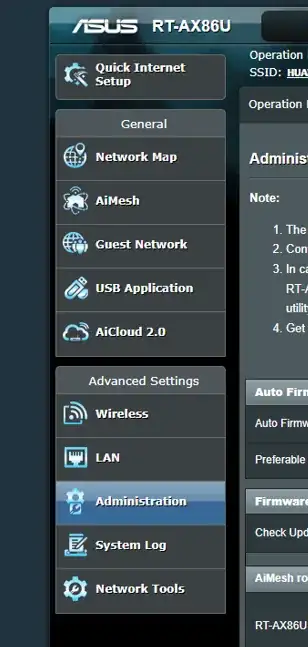I have 3 routers. 1 of which is from my ISP and the other 2 I use to extend my wifi connection on ground floor and second floor of our house. See setup in image below.
I was following this tutorial. But it seems that for my use case that two routers are connected to one modem, It doesn't seem to apply.
My Problem is that Router 2 and 3 cannot see devices connected to either one of them. Hence, if my NAS is configured on router 2, only devices connected to Router 2 could see it and not those on router 3 which would make it impossible for me to configure my IP Cameras connected on router 3 to record on the NAS.
To make matters worst for me, I can't make Router 2 work in AP mode since alot of its features are disabled like traffic analysis etc hence I had it work in router mode unlike Router 3. See differences in features below.
Router 2 in AP Mode.
Router 2 in Router Mode.
I tried changing the LAN IP address of my router 2 to the same octet used by my router 1 and 3, but to no avail, internet and lan is not working at all. Internet would only work if I changed the WAN IP address to the same octet of the router 1, but if I had it that way, the router wont allow me to change the LAN IP address to the same 3rd octet as it says LAN and WAN Ips should be different.
Other notes:
- DHCP is enabled on Router 2 and 1
- DHCP is disabled on Router 3
- I cannot disabled DHCP on Router 1 along with manually assigning IP
- address to certain macs, as this is an ISP modem and I have no admin access.
How can I configure this network to make router 2 and router 3 see devices connected on each other so that they can share NAS as well as be able to configure the routers 3 gateways no matter where I connect to?.
BTW, my Aim is:
- I am trying to save around 10-15 bucks and wiring mess by not buying another 20 meter CAT6 ethernet cable and making Router 2 the main router and connecting my Router 3 to router 2 instead of router 1. I am also trying to make router 1 still useful and accessible to the network since router 1 has free 3x gigabit ports that my router 3 wifi repeater doesnt have. Hence if I connect our smart tv and another old IP Camera via LAN, other devices should still be able to see it in the network to be able to take advantage of being able to configure the gateways of routers etc.
I just happen to read somewhere too, that apparently, the setup that I have atm where my router 2 cant see the other devices on router 3 is what is called a Cascaded network as seen in this blog.


